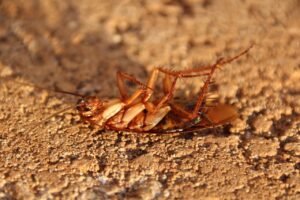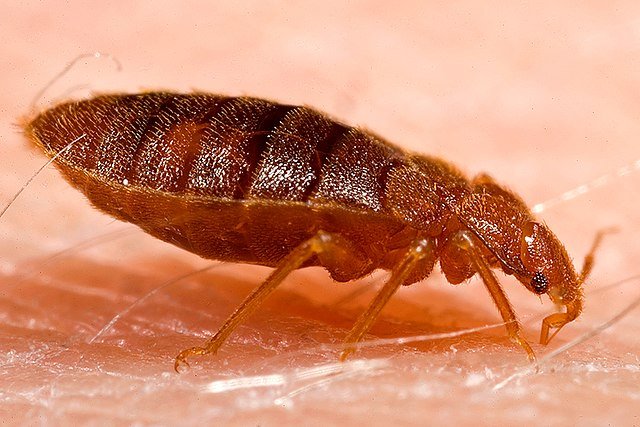Palmetto Bugs: What They Are, Where They Hide, and How to Get Rid of Them
 Palmetto bugs are large roaches often found in warm, humid regions. Learn what they are, where they hide, how to eliminate them, and how they compare to other cockroaches.
Palmetto bugs are large roaches often found in warm, humid regions. Learn what they are, where they hide, how to eliminate them, and how they compare to other cockroaches.
What Are Palmetto Bugs?
The term "palmetto bug" is commonly used in the southeastern United States to refer to the American cockroach (Periplaneta americana). These insects are large, reddish-brown, and often cause panic when spotted indoors. The name “palmetto bug” is not a scientific classification but a regional nickname, used to make these roaches sound less unpleasant.
Palmetto bugs typically measure between 1.5 and 2 inches in length. They have wings and can fly short distances, especially when disturbed. They prefer warm, damp environments and are active mainly at night.
Despite their nickname, palmetto bugs are not a separate species. They are a type of cockroach, specifically one of the largest and most resilient.
Where Do Palmetto Bugs Live?
Palmetto bugs thrive in tropical and subtropical climates, which is why they are especially common in states like Florida, Georgia, South Carolina, Louisiana, and Texas. Outdoors, they can be found under mulch, inside palm trees, in sewer systems, and around moist landscaping.
Indoors, they seek out dark, damp areas like:
Bathrooms
Kitchens
Laundry rooms
Basements
Crawlspaces
They often enter homes through drains, gaps in doors and windows, plumbing, or vents. They are attracted by food crumbs, water leaks, and cluttered storage areas.
Why Are They a Problem?
While palmetto bugs are not typically aggressive, they pose health risks. They carry a wide range of pathogens picked up from dirty environments such as sewage, trash, and animal waste.
They can contaminate surfaces and food with bacteria such as:
Salmonella
E. coli
Staphylococcus
Their feces, body parts, and shed skins can also trigger allergic reactions and asthma, especially in children and the elderly. Beyond health risks, their size and appearance can be disturbing, and their presence is often a sign of unsanitary conditions or moisture problems.
Palmetto Bugs vs Cockroaches
Many people wonder if palmetto bugs are different from cockroaches. The simple answer is no. The term “palmetto bug” almost always refers to the American cockroach, one of the largest species of household roaches.
There are, however, other types of cockroaches that invade homes:
German cockroaches, which are smaller and more common in kitchens
Oriental cockroaches, which are darker and prefer cooler, damper spaces
Smokybrown cockroaches, which are similar in size to palmetto bugs but are more common outdoors
The main difference between palmetto bugs and other roaches is their size, ability to fly, and preference for both indoor and outdoor environments. While most roaches hide and crawl, palmetto bugs can fly toward light sources and are often found in bathrooms, where they enter through plumbing.
Signs of a Palmetto Bug Infestation
Seeing one palmetto bug during the day often means there are more hiding nearby. Some common signs include:
Droppings that resemble black pepper or coffee grounds
Brown, oval egg cases in dark corners
Shed skins near baseboards or appliances
A musty, oily smell in rooms with high humidity
Nighttime sightings, especially in the kitchen or bathroom
If you see multiple roaches or notice signs regularly, the infestation may already be serious.
How to Get Rid of Palmetto Bugs
Step 1: Eliminate Food and Water Sources
Palmetto bugs are drawn to moisture and food. To make your home less attractive:
Fix leaky pipes and faucets
Use a dehumidifier in humid rooms
Store food in airtight containers
Clean up crumbs and spills quickly
Take out the trash every night
Step 2: Seal Entry Points
Inspect your home and seal any gaps where bugs could enter:
Install door sweeps and window screens
Use caulk to seal cracks and crevices
Cover drains with fine mesh
Close gaps around pipes and vents
Step 3: Use Baits and Insecticides
Cockroach baits are one of the most effective tools against palmetto bugs. Look for gel baits or bait stations containing fipronil or hydramethylnon. Place them in corners, under sinks, and near entry points.
Insect growth regulators (IGRs) can help prevent reproduction. For heavier infestations, use residual sprays in wall voids or along baseboards, always following label instructions.
If you prefer a more natural approach, boric acid can work, but only when applied correctly and away from pets and children.
When to Call a Professional
If your infestation is large or persistent, or if you see palmetto bugs regularly despite your efforts, it's time to call a licensed pest control service. Professionals can access commercial-grade insecticides and perform targeted treatments, including wall injections, perimeter sprays, and follow-up inspections.
In highly infested cities like Miami, New Orleans, or Houston, regular pest control maintenance may be necessary year-round due to the climate.
Expert Source from the U.S.
According to the University of Florida IFAS Extension, palmetto bugs (American cockroaches) are among the most common pests in the southeastern United States. Their publication “Cockroach Management in the Home” confirms their link to unsanitary conditions and supports integrated pest management methods for long-term control.
Source:
University of Florida IFAS Extension
Prevention Tips
To keep palmetto bugs out of your home:
Keep your home dry and well-ventilated
Store firewood and mulch away from the foundation
Repair roof leaks and plumbing issues promptly
Don’t leave pet food or dishes out overnight
Regularly inspect crawlspaces, attics, and drains
In climates like Florida or Southeast Asia, preventive pest control is often part of routine home maintenance.
Final Thoughts
Palmetto bugs are not a separate species of insect, but rather a large type of cockroach known for their size and disturbing presence. Though they are less dangerous than some pests, they still pose real health risks and should not be ignored.
By keeping your home clean, dry, and sealed, and by using the right baits or calling professionals when needed, you can eliminate these pests and prevent them from coming back.
Disclaimer
This article is for informational purposes only. Pest control laws and approved chemicals vary by country. For best results and legal safety, we strongly recommend contacting a licensed pest control professional in your local area. Always make sure that the pest control technician is properly certified or licensed, depending on your country’s regulations. It’s important to confirm that they only use approved products and apply them exactly as instructed on the product label. In most places in Europe, UK, or USA, following label directions is not just best practice—it’s the law.

